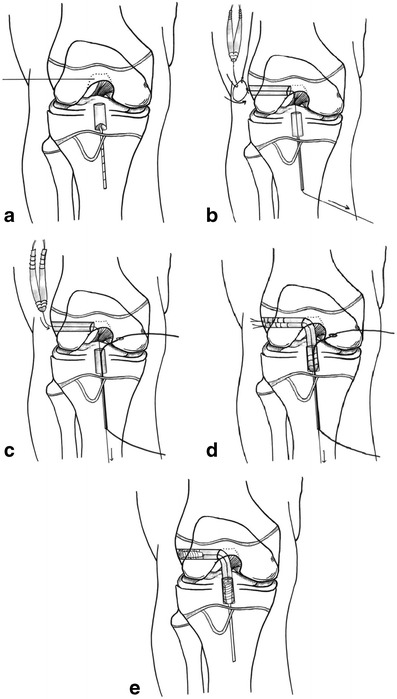Fig. 3.

a–e The all-epiphyseal ACL reconstruction technique is shown. a A guidewire is placed in the distal femoral epiphysis parallel to the physis to the center of the femoral attachment point of the ACL. A Retrograde drill (Arthrex, Naples FL) is used in the tibia to create a tunnel in the tibial epiphysis. Proper placement can be confirmed with an intraoperative CT scan. b The femoral tunnel is drilled. A passing suture is placed up the cannulated guide pin of the Retrodrill and retrieved out the femoral tunnel. c The passing suture is used to bring a Nitinol wire and the lead sutures of the graft through the knee. The femoral end of the Nitinol wire then is retrieved out the medial portal. d The lead sutures on the graft are used to pull the graft through the femoral tunnel and into the tibial tunnel. e The Nitinol wire then is used to aid in placement of the tibial Retroscrew. The knee is brought into extension and the graft tensioned and secured in the femur with an interference screw. (Adapted from [59], with permission.)
